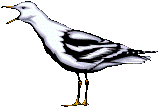Eastern Wildlife Damage Control Conferences

Eastern Wildlife Damage Control Conference: 2nd (1985)
Date of this Version
September 1985
Document Type
Article
Abstract
In 1984 4-aminopyridine baits, stabilized with hydrochloric acid, were appraised in ripening cornfields being attacked by blackbirds on the Sand Lake National Wildlife Refuge., South Dakota. In 1982, i t had been discovered that 4-aminopyridine, the active agent in commercial Avitrol® baits for crop protection rapidly vaporized at summer storage and field baiting temperatures. In July, baiting lanes were created in 12 cornfields by destroying every 55th row. In August after a 3-day pretreatment period, fields were baited with Avitrol® FC Corn Chops-99 for a 2-week period when corn was most vulnerable to damage. Bait was applied from baiting lanes at the rate of 1 Ib/acre of field with an electric seeder mounted on an all-terrain cycle. Rebaitings were made at half the initial rate; 0 to 3 rebaitings were needed, largely because of depletion of baits by insects and rodents. An insecticidal pretreatment, 5% carbaryl pellets, did not significantly lower the rate of bait depletion. Blackbird damage was 87% less (P=<0.001) during the baited than the pretreatment period (19 vs 142 bu of corn lost per day). From 2,000 to 17,000 blackbirds, mostly red-winged and yellow-headed blackbirds, were observed in test fields. An estimated 825 dead or affected blackbirds and 1 mourning dove were observed or collected in test fields. Application of baits on baiting lanes with a seeder mounted on a cycle proved both economical and efficient . About 100 acres/h were baited at an estimated cost of <15 cents/acre/application. About $5:50 worth of corn was saved for each $1 spent for bait and loss of corn yield in baiting lanes. Growers would have saved about $400/h for time spent in creating lanes and baiting.

